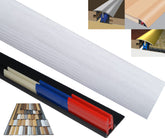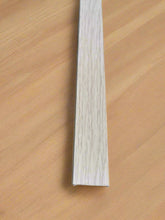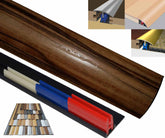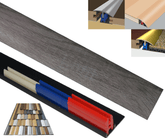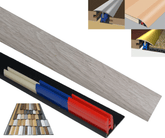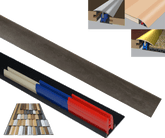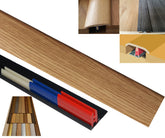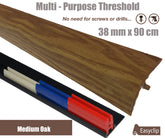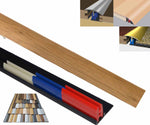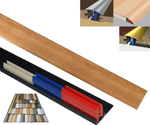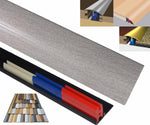Installing Underfloor Heating: Why Engineered Wood Flooring Is the Perfect Choice

Installing Underfloor Heating: Why Engineered Wood Flooring Is the Perfect Choice
Introduction
Underfloor heating has become a hallmark of modern comfort and efficiency, transforming cold floors into sources of gentle, consistent warmth. Whether you’re renovating a home or building a new one, this heating method offers luxurious comfort without the bulk of radiators or vents. However, the type of flooring you choose to pair with your underfloor system can significantly influence its performance and longevity.
Among the many flooring options available, engineered wood stands out as one of the best companions for underfloor heating. It combines natural beauty with advanced stability, offering both style and practicality. In this article, we’ll explore how underfloor heating works, why engineered wood is such a smart choice, and what you should consider during installation to get the most out of your system.
Understanding Underfloor Heating
Underfloor heating (UFH) works by distributing heat evenly across the floor surface, radiating warmth upward to fill the room. There are two primary types:
-
Electric underfloor heating (dry system) – Uses electric cables or mats that heat up when current passes through them. It’s generally easier to install and ideal for smaller spaces or retrofitting projects.
-
Hydronic underfloor heating (wet system) – Circulates warm water through pipes embedded beneath the floor. It’s more energy-efficient in the long run and well-suited to larger spaces or new builds.
The main appeal of UFH lies in its uniform heating and its ability to free up wall space. It also creates a healthier indoor environment by reducing the dust circulation that’s common with forced-air systems.
However, the effectiveness of any underfloor heating setup depends on the material above it. Flooring that insulates too well, such as thick carpet or solid hardwood, can prevent heat from passing through efficiently. This is where engineered wood flooring shines.
Why Engineered Wood Flooring Works So Well with Underfloor Heating
1. Superior Dimensional Stability
Traditional solid hardwood flooring, while beautiful, expands and contracts noticeably with changes in temperature and humidity. This can lead to gaps, warping, or cupping when exposed to the warmth generated by underfloor heating.
Engineered wood, on the other hand, is constructed in layers. The top layer is a real hardwood veneer, while the base layers are made of high-density plywood or other cross-laminated woods. This multi-layered structure gives engineered wood remarkable stability, allowing it to withstand temperature fluctuations without losing its shape.
That stability means you can enjoy the look and feel of real wood without worrying about structural movement or surface damage from heat.
2. Efficient Heat Transfer
One of the most important factors when choosing flooring for underfloor heating is thermal conductivity — how efficiently the material transfers heat. Engineered wood performs exceptionally well in this regard, particularly when the planks are between 14mm and 18mm thick.
Because engineered wood is less dense than stone or tile, it warms up faster, creating a cozy environment more quickly after the system is switched on. The thinner and denser the boards, the better the heat transfer — which means your home stays comfortable without wasting energy.
3. Aesthetic and Design Flexibility
Engineered wood flooring offers all the warmth and character of solid wood but with far more flexibility. Available in countless finishes, grains, and tones — from light oaks to deep walnuts — it can suit almost any interior design.
This flexibility extends to installation too. Engineered wood can be laid as a floating floor (using click systems or glue) or fully adhered to the subfloor, depending on the underfloor heating system used. Its versatility makes it an excellent choice for modern interiors aiming for both form and function.
4. Durability and Longevity
Thanks to its layered construction, engineered wood is less prone to cracking or warping, making it ideal for homes with consistent floor heating. Many products come with durable finishes — such as UV oils or lacquers — that resist wear and moisture.
With proper installation and maintenance, engineered wood floors can last decades, even in homes that use underfloor heating daily throughout the colder months.
Installation Considerations
1. Acclimatization
Before installation, engineered wood should acclimatize in the room where it will be laid for at least 48–72 hours. This allows the material to adjust to the room’s humidity and temperature, reducing the risk of post-installation movement.
2. Temperature Settings
Underfloor heating should be brought up to temperature gradually after installation. Avoid setting it above 27°C, as excessive heat can damage the flooring over time. A programmable thermostat is recommended to maintain a stable and efficient temperature range.
3. Underlay and Subfloor Preparation
The subfloor must be clean, dry, and level. If using a floating installation method, select an underlay specifically designed for underfloor heating — one that allows efficient heat transfer and moisture protection. For glued installations, ensure you use adhesives rated for UFH compatibility.
4. Moisture Control
Even though engineered wood is more resistant to moisture than solid hardwood, it’s still important to prevent excess humidity. A vapor barrier or moisture-resistant underlay can provide an added layer of protection, particularly over concrete subfloors.
Benefits Beyond Comfort
Installing underfloor heating with engineered wood isn’t just about warmth — it’s about energy efficiency and home value. Because UFH operates at lower temperatures than traditional heating systems, it uses less energy to maintain a comfortable environment. Over time, this translates to lower heating bills and a smaller carbon footprint.
Additionally, removing radiators or vents opens up wall space, making rooms appear more spacious and modern. Combined with the timeless appeal of real wood flooring, the result is a clean, luxurious aesthetic that can enhance property value.
Maintenance Tips
-
Avoid excessive water when cleaning. Use a damp mop rather than a wet one.
-
Keep humidity between 40–60% to prevent wood from drying out or expanding.
-
Inspect and service your underfloor heating system annually to ensure consistent performance.
-
Use felt pads under furniture legs to avoid scratches and maintain your floor’s finish.
Conclusion
Underfloor heating offers unparalleled comfort, and when paired with engineered wood flooring, it becomes a truly seamless and efficient solution. Engineered wood’s structure makes it stable, stylish, and thermally compatible — the perfect blend of innovation and natural beauty.
If you’re planning to invest in underfloor heating, choosing engineered wood flooring ensures that your home remains warm, elegant, and energy-efficient for years to come.


